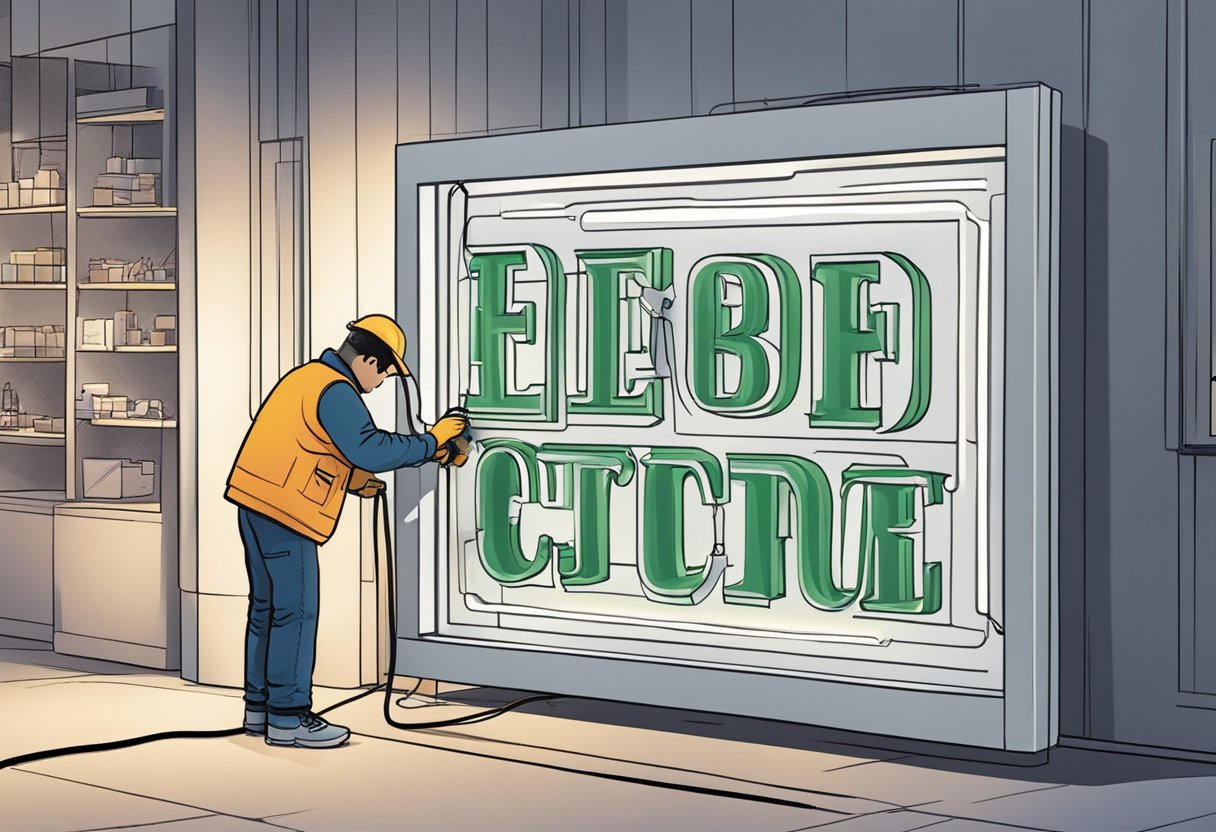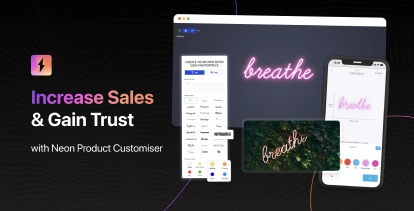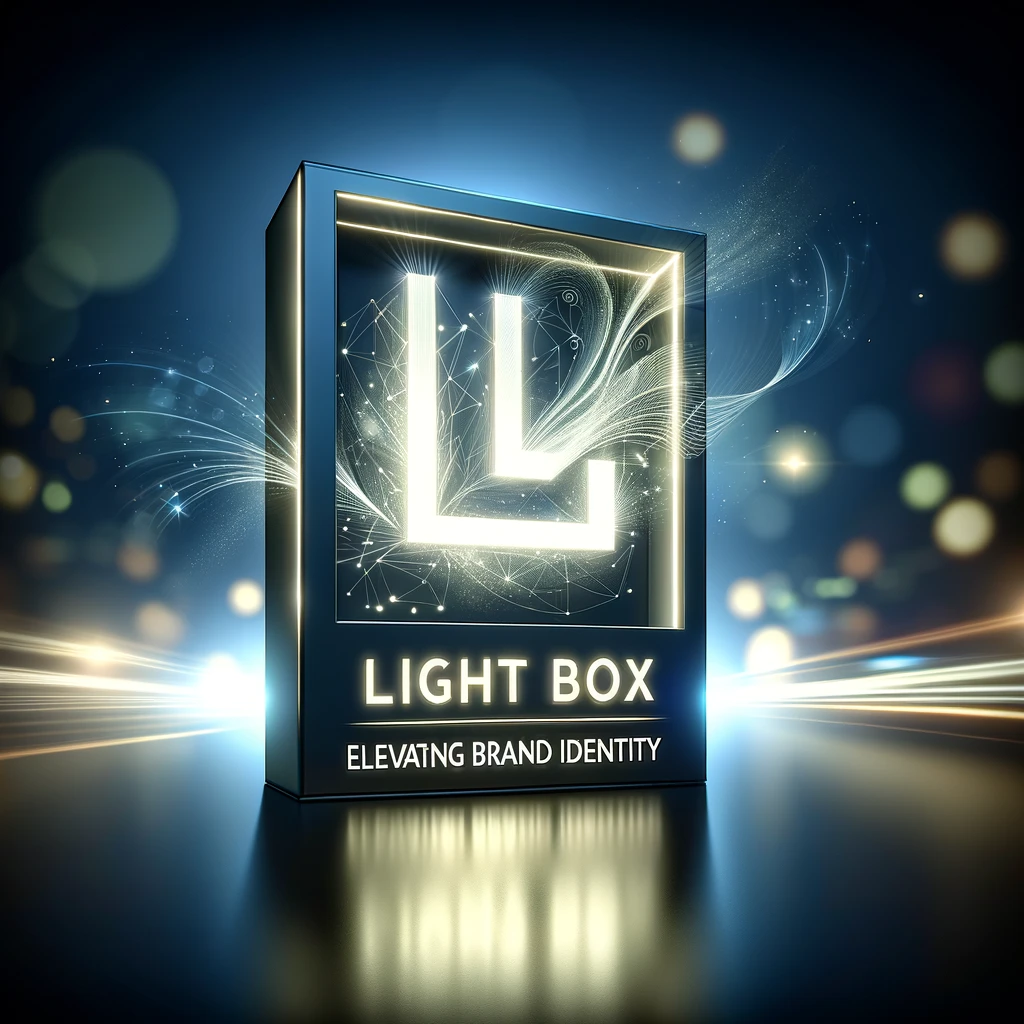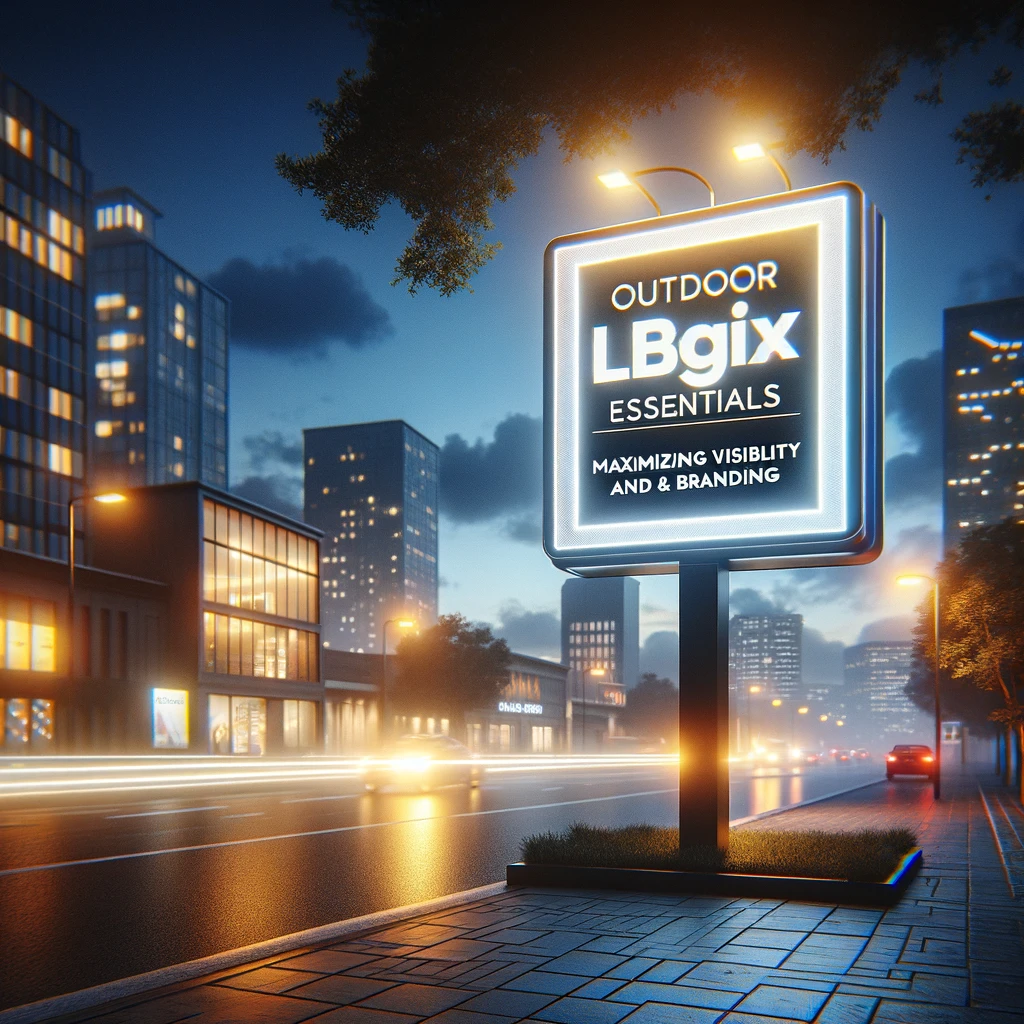Creating a lightbox sign is an effective strategy for enhancing the visibility of a brand or advertisement. These illuminated displays are designed to draw attention both day and night, making them a widely-utilized tool in the marketing arsenal of various businesses. They serve not only as a means of displaying messaging but also as a way to increase brand recognition through consistent and prominent placement.

The fabrication of a lightbox sign involves several components including a durable frame, translucent panel, lighting elements such as LED or fluorescent bulbs, and the graphic itself. Ensuring that these elements are skillfully combined is critical to producing a sign that is both aesthetically pleasing and functional. Careful consideration of the sign’s location and ambient lighting conditions will enhance its effectiveness in capturing the attention of passersby.
A lightbox sign’s impact on advertising and branding is substantial owing to its continuous illumination and sharp presentation. Such signs are often situated in high-traffic areas, thereby maximizing exposure to potential customers. The meticulous crafting of a lightbox sign can result in an influential advertising tool that effectively conveys a business’s message and fortifies its brand identity.
Understanding Lightbox Signs
Lightbox signs are a strategic marketing tool used by businesses to enhance visibility and brand presence. Usually illuminated from within, they effectively attract attention both day and night.
Types of Lightbox Signs
There are several distinct types of lightbox signs accommodating different business needs:
- Monument Signs: They are large, ground-level signs often used by businesses like hotels or corporate complexes for prominent street-side visibility.
- Pylon Signs: These tall signs are usually mounted on a pole or a tower, making them visible from a distance, useful for businesses like gas stations or shopping centers.
Each type serves a specific purpose, facilitating customers to spot a location from various distances and perspectives.
Benefits of Lightbox Signs
The benefits of lightbox signs for businesses are multifaceted:
- Enhanced Visibility: The illumination makes these signs highly visible, even from afar or in low-light conditions.
- 24/7 Advertising: Lightbox signs continue to advertise products and services round-the-clock, maximizing marketing efforts.
Businesses often experience a noticeable improvement in foot traffic and customer engagement upon installing a well-designed lightbox sign.
How Lightbox Signs Enhance Branding
Lightbox signs enhance branding by:
- Consistent Brand Representation: They can be customized to match brand colors, logos, and themes.
- Memorable Impressions: An eye-catching design can make a business stand out, leaving a lasting impression on both current and potential customers.
It is the combination of lighting, design, and strategic placement that turns these signs into powerful tools for establishing and reinforcing brand identity.
Designing Your Lightbox Sign
Designing a lightbox sign requires attention to detail in choosing the appropriate font, crafting engaging graphics and phrases, and determining accurate dimensions to make the sign effective and visually appealing.
Choosing the Right Font
The font selection is critical as it affects legibility and the sign’s impact from various distances. For the main text, one should opt for bold, sans-serif fonts like Arial or Helvetica, which are easy to read. The size of the lettering should be scaled according to the viewing distance - larger fonts for signs meant to be read from afar and smaller ones for closer interaction.
Creating Compelling Graphics and Phrases
Graphics and phrases should be concise and memorable. Utilize high-contrast colors for the graphics to ensure visibility both day and night. Simple, powerful phrases paired with relevant, eye-catching graphics can significantly enhance the sign’s ability to attract attention and convey the intended message effectively.
Determining the Dimensions
The dimensions of the sign are determined by its intended use and location. A standard format to consider for indoor lightbox signs is 24” x 36”, while outdoor signs may require larger dimensions for optimal visibility. It’s essential to ensure the frame supports these dimensions and provides adequate space for the design elements to breathe, ensuring maximum impact.
Materials and Tools Required

Creating a lightbox sign requires a careful selection of quality materials and the correct tools for assembly to ensure durability and optimal illumination.
List of Necessary Materials
For constructing a lightbox sign, one will need several materials:
- Acrylic Sheets: They serve as the sign’s face and are preferred for their clarity and durability.
- Plywood or Metal Backing: To provide structural support. Aluminum is commonly used for its lightweight and rust-resistant properties.
- LED Lights: These will be the sign’s light source.
- Adhesive: For securing the panels to the frame.
- Tape: This may include double-sided tape for components that need to be easily removable.
- Power Supply: To power the LED lights.
Choosing Quality LEDs
When selecting LED lights for a lightbox:
- Choose LEDs with a high brightness level and color temperature suitable for the sign’s intended purpose.
- Ensure the LEDs have a consistent quality to prevent light spots and to provide uniform illumination.
Tool Selection for Assembly
The proper tools are crucial for assembling a lightbox sign:
- Scissors and Hacksaw: For cutting materials to the required dimensions.
- Drill: To create holes for mounting or for the LED wiring.
- Clamps: To hold materials in place while they are being worked on.
- Tape Measure: For precise measurements during the assembly process.
Ensure each tool is fit for the material it will be used on; for example, use a fine-toothed hacksaw blade for cutting metals such as aluminum.
Preparing the Sign Components

Before constructing a lightbox sign, the components must be meticulously prepared. This includes cutting the frame and back panel, readying the acrylic sheet, and prepping the lettering and graphics---all fundamental for a polished and functional end product.
Cutting the Frame and Back Panel
The frame provides the structural support for the lightbox sign and should be cut from durable material suited for the intended environment. Measure twice to ensure accuracy and cut using a saw that can deliver a clean, straight edge. The back panel, typically made from the same material as the frame, should fit perfectly within the constructed frame. After cutting, smooth any rough edges with sandpaper to prepare for assembly.
Preparing the Acrylic Sheet
Acrylic sheets act as the sign’s face and should be cut to precisely match the dimensions of the frame. Remove the protective film and clean the acrylic thoroughly before applying any graphics. To prevent scratches during handling, it’s advisable to work on a soft, clean surface.
Prepping Letters and Graphics
Letters and graphics are central to the sign’s design and visibility. These elements can be created using vinyl, paint, or printed graphics. After designing, they must be carefully cut and applied to the acrylic sheet. For painted lettering, use stencils and apply thin, even coats of paint, allowing sufficient drying time between layers. Vinyl graphics should be transferred with care to avoid air bubbles or misalignment.
Assembling the Lightbox

Creating a professional-grade lightbox involves careful assembly of components to ensure even lighting and crisp display. The process includes mounting the lighting system, affixing the display materials, and securing all parts into a cohesive unit.
Mounting LED Lights
One must begin by attaching LED strips inside the frame using a strong adhesive or tape. It’s crucial to ensure that the LEDs are evenly spaced to provide uniform illumination. For a DIY lightbox, often double-sided tape is favored for its ease of use and effective hold.
Affixing the Acrylic and Graphics
Once the LEDs are in place, the next step involves placing the acrylic sheet onto the frame. A DIY lightbox typically utilizes adhesive or clear tape to attach the sheet securely. Graphics are then carefully aligned and affixed on top of the acrylic to avoid bubbles or misplacement that could detract from the visual clarity.
Securing the Frame and Back Panel
The last step is assembling the frame and back panel to enclose the lightbox. One should apply duct tape or a similar strong tape around the edges to ensure stability. If the lightbox design includes a dimmer or controller for the LED lights, connections must be made to the power cord before finalizing the assembly to ensure proper operation.
Final Adjustments and Installation

Making the final adjustments and installing your light box sign are critical steps to ensure its long-lasting performance and visibility. Precise testing of the LED lights, secure installation of the power system, and proper hanging or mounting of the sign are key to illuminating your message effectively, be it for outdoor marquees or cozy restaurant signs.
Testing the LED Lights
Before permanently installing the light box sign, one must test the LED lights to ensure they uniformly illuminate the sign. Connect the LEDs to the power source and check for any dim areas or non-functioning lights. Replace any faulty LEDs at this stage to prevent any inconsistencies in lighting after installation.
Installing the Power System
The power supply is integral for the continuous operation of your light box sign. One should connect the power supply to the LEDs using insulated, outdoor-rated wires, especially if the sign is intended for outdoor use. Ensure all connections are tight, and the power supply is securely fastened within the sign housing. Utilize electrical tape or heat-shrink tubing for additional protection.
Hanging or Mounting the Sign
For hanging or mounting the sign, measure the desired location carefully and use sturdy brackets or mounting hardware that can support the sign’s weight. For outdoor signs, it is important to consider weather elements; therefore, they should be mounted in a way that prevents water ingress. If it is a restaurant sign or similar, it should be positioned to catch the eye of passersby without obstructing walkways or violating any local codes. Always use the appropriate tools and fasteners for the surface you are mounting the sign to, ensuring it is both level and secure.
Maintenance and Care for Lightbox Signs
Proper maintenance and care are essential to prolonging the durability and effectiveness of lightbox signs. These custom signs require regular attention to remain clear, fully illuminated, and functional.
Cleaning and Upkeep
Lightboxes should be cleaned periodically to ensure maximum visibility and to maintain their aesthetic value. Owners of lightbox signs should follow these steps:
- Turn off and unplug the sign before cleaning to avoid electric shock.
- Remove surface dust using a soft, dry cloth to prevent scratching.
- Wipe the exterior with a gentle cleaner and a damp cloth, avoiding abrasive chemicals that can damage the sign’s surface.
- Dry thoroughly with a soft cloth to prevent water spots and streaking.
Troubleshooting Common Issues
Common issues with lightbox signs might include flickering lights, dimming, or electrical problems. Here’s a brief guide to troubleshooting:
- Flickering or dimming: Check for loose connections or replace old fluorescent bulbs with new ones.
- Electrical problems: Ensure the power supply is consistent and the voltage matches the sign’s requirements.
Scheduling regular maintenance can help identify potential issues before they become costly problems. Regular checks of the sign’s structure should also be included to ensure its longevity and durability.
Extending Your Sign’s Impact
Maximizing a lightbox sign’s visibility is crucial for any business looking to increase exposure and attract more customers. By implementing effective strategies and understanding the versatility of lightbox signs, businesses can create a custom sign solution that stands out both day and night.
Strategies for Increased Exposure
A lightbox sign demands attention through its illumination, but strategic placement and design are key to extending its impact. To ensure maximum exposure:
- Location: Place the sign in high-traffic areas where it is easily noticeable from various angles and distances.
- Design: Incorporate bold fonts and contrasting colors to make the messaging on the custom sign easily readable.
- Size: Consider scaling the sign appropriately to ensure that it can be seen from afar without overwhelming the space it occupies.
- Lighting: Opt for LED lighting within the lightbox sign, as it is not only cost-effective but also provides consistent and long-lasting brightness.
Versatile Uses for Different Business Types
Lightbox signs are not one-size-fits-all and can be tailored to suit a variety of business types, enhancing their advertising effectiveness:
- Retail: For retail establishments, lightbox signs can feature promotional content and branding that reflects current sales or seasonal offers.
- Restaurants: They can display menu highlights or special dishes, enticing potential customers with visually appealing graphics and text.
- Service Providers: Businesses like salons or gymnasiums can benefit from the versatility of lightbox signs by advertising a range of services or membership benefits.
By selecting the correct lightbox sign type and employing these tactics, businesses gain the potential for increased customer engagement and a boost in advertising efficacy.




